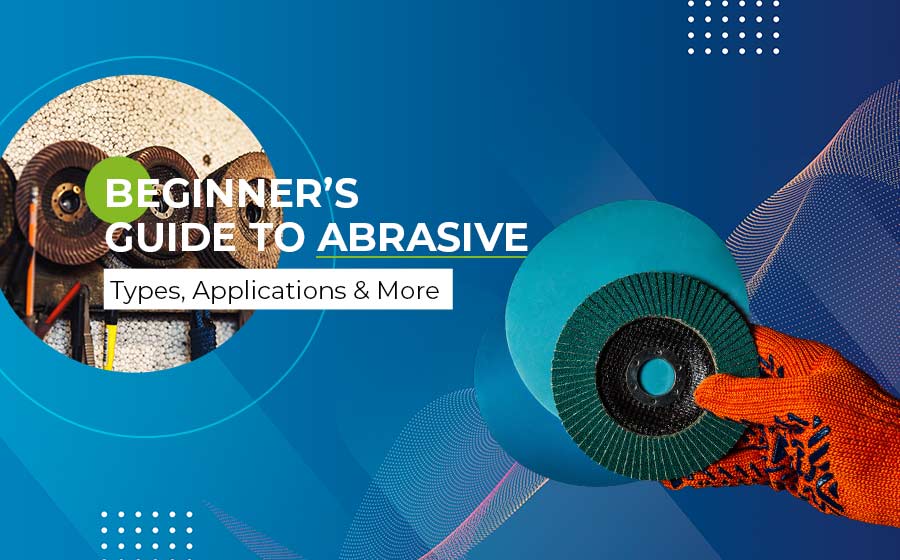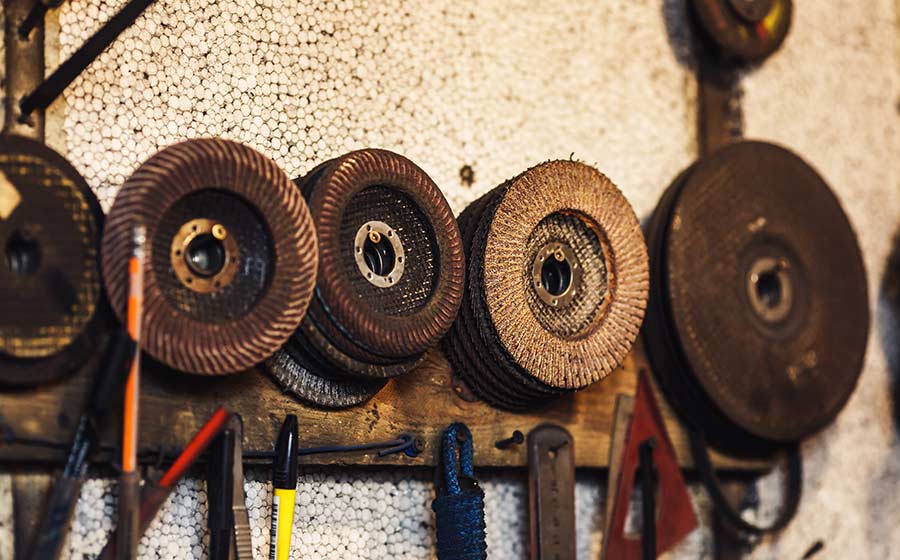
Beginner’s Guide to Abrasive: Types, Applications & More
What is an abrasive?
An abrasive is a material that shapes or finishes a workpiece by repeated rubbing. The repeated rubbing action wears away the workpiece due to friction. The abrasive helps to provide a smooth and polished finish to the workpiece. Alternatively, it can also be used to roughen a surface to give it a beaded, matte or satin finish.
In a nutshell, minerals that are used to polish, grind and cut other soft materials are known as abrasives.
Abrasives are generally minerals, that are a hard crystal. They can either be found in nature or manufactured in a facility. The most common materials that are used as abrasives include:
- Silicon carbide
- Aluminium oxide
- Diamond
- Cubic boron nitride
Other less common materials that are used as abrasives include glass, zirconium, garnet and walnut shells.
How do abrasives work?

Abrasion is the process of scratching the surface of a material with another stronger and harder material. As per the Mohs scale of hardness, only materials that are stronger than the workpiece can be used as abrasives. Abrasives have hardness values ranging from 6 to 10 on the Mohs scale, and they are used to smooth, polish, clean or reduce other less harder materials.
During abrasion, the abrasives penetrate the work material and cause tearing of the surface. The ease with which the abrasive tears the surface of the abraded material depends on several factors like the strength, toughness and hardness of both materials. Another crucial factor is the resistance of the work material to abrasion.
Types of abrasives

The two major types of abrasives include:
- Natural abrasives – they are naturally found in nature and excavated from mines. Some of the common natural abrasives include diamond, corundum and emery. They are primarily used in honing stones and grinding wheels.
- Manufactured abrasives – they are also known as synthetic abrasives and are as efficient, if not even more efficient than natural abrasives. Some of the common manufactured abrasives include boron carbide, silicon carbide, titanium carbide and aluminium oxide.
Other classification of abrasives

Abrasives can also be classified as coated or bonded.
- Bonded abrasives are attached to a binder. The common binders used include rubber, glass, resin or clay.
- Coated abrasives are fixed to a substrate like rubber, resin, paper, cloth, polyester or metal. One common example of a coated abrasive is sandpaper. Here the abrasives are coated on a paper substrate. The person using the sandpaper holds the smooth side of the material and adjusts the pressure on the rough side to smoothen hard materials.
- Loose abrasives are held in a solid or liquid carrier and are used for tumbling, polishing of other materials. They are propelled by water pressure or air against the work surface. A good example of loose abrasives in action is sandblasting of buildings.
Applications of abrasives

Abrasives play a key role in several industries. From small-scale units to large industrial complexes, abrasives are used in a wide variety of applications. Abrasives are classified into the following categories based on its uses:
- Shaping – primarily used in tool sharpening and grinding
- Separating – for slicing and cut-off operations
- Sizing – generally used for precision grinding
- Cleaning – for removing excess materials such as rough-off in foundries and for cleaning of miscellaneous surfaces
The evolution of manufactured abrasives

Over the last several decades, synthetic abrasives have replaced natural abrasives. Manufactured abrasives like aluminium oxide and silicon carbide are used in place of natural abrasives like diamonds. One of the main reasons why synthetic abrasives are preferred over natural ones is that they are cost-effective. Manufactured abrasives like silicon carbide and aluminium oxide are significantly cheaper than diamonds used as abrasives.
Another reason for the success of manufactured abrasives is that they are superior, controllable and uniform. Aluminium oxide and silicon carbide are extremely hard and brittle, having sharp edges. These sharp edges act as an abrasive helping to cut the surface of the work material and reduce the heat generated during the abrasion. Brittle abrasives like silicon carbide and aluminium oxide are primarily used in finish grinding and precision applications. Tough abrasives, on the other hand, are used for rough grinding as they resist fracture and last longer.
If you are looking for the best, high-quality industrial abrasives in India, reach out to EuroIndustriel. With a wide network of the best industrial suppliers in India, we help you source abrasives for your project needs at the best possible prices.















